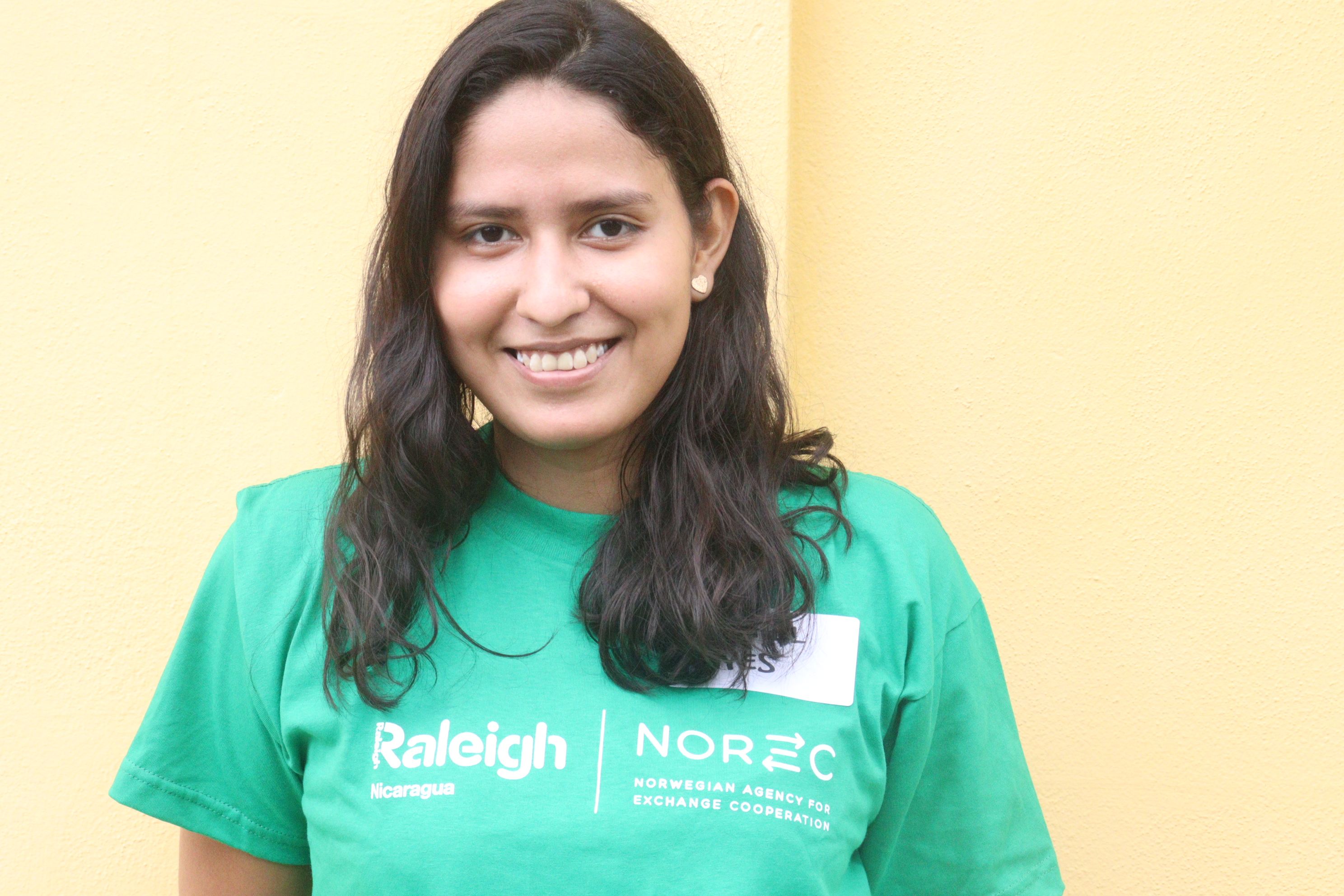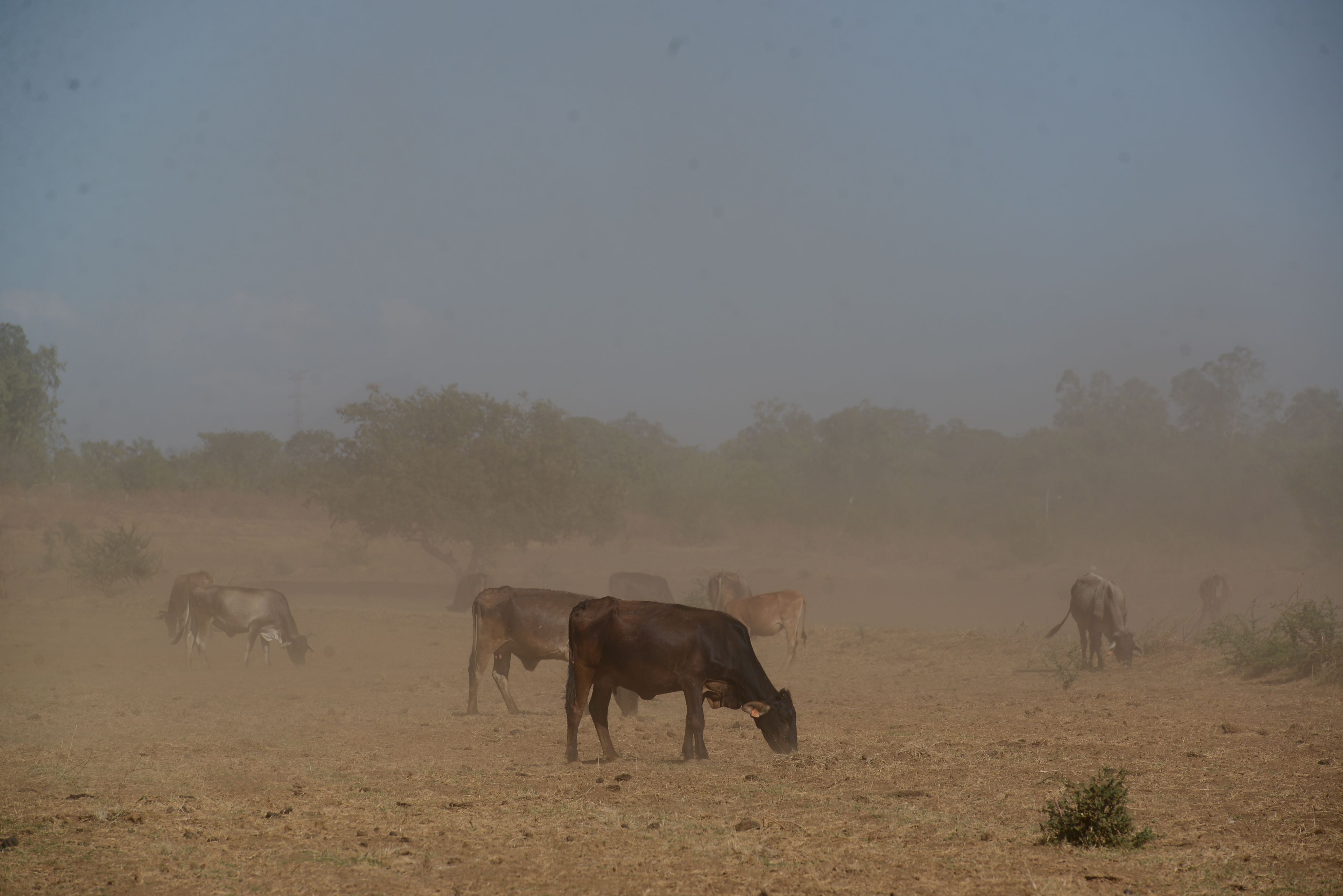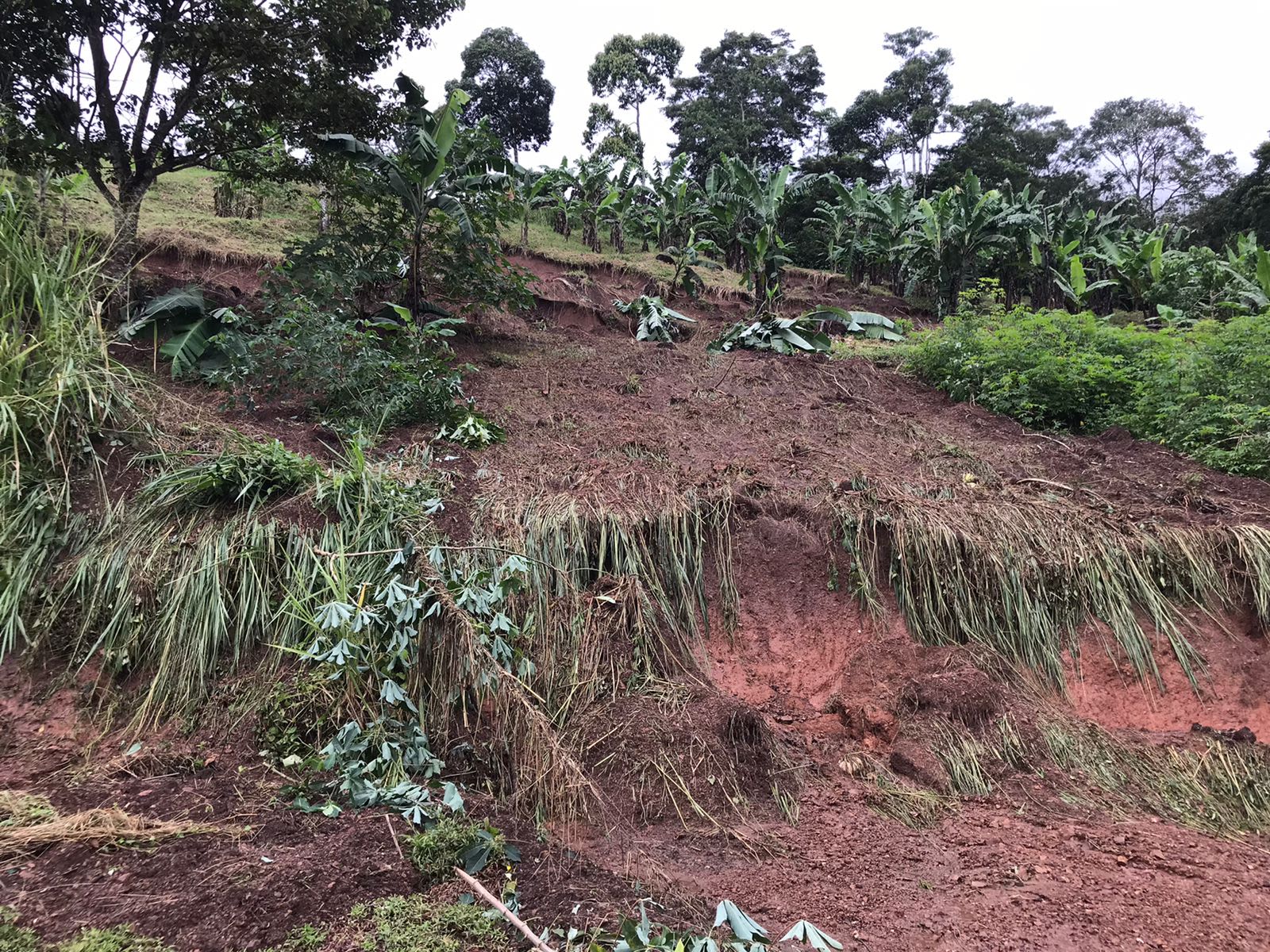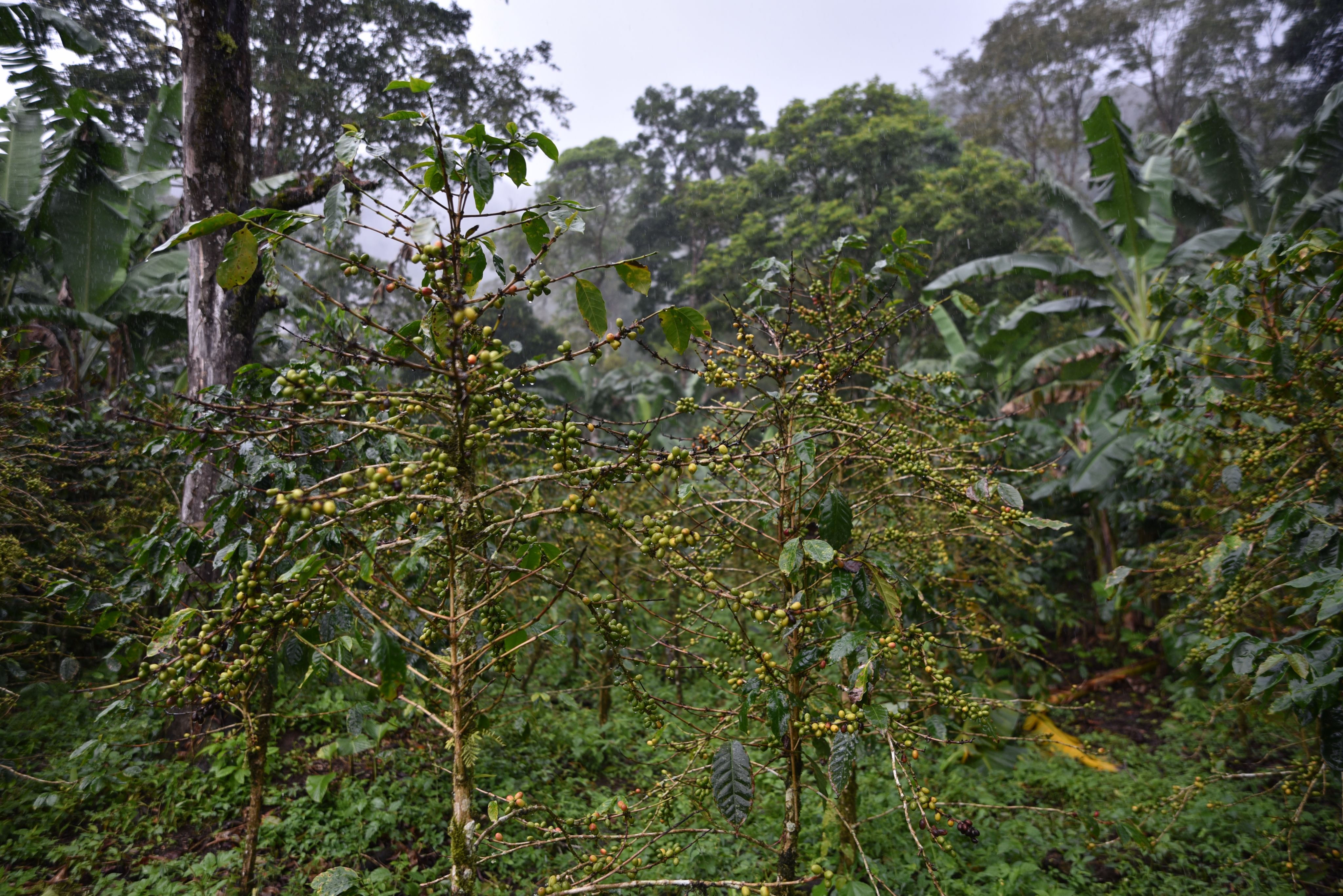NextGen Nicaragua

Five young people from Nicaragua report on stories of the climate emergency...
They are all volunteers for Raleigh International







Hanzell Benavides, 26
Hanzell Benavides, 26

Grethel Reyes, 24
Grethel Reyes, 24

Jocelyne Sánchez, 25
Jocelyne Sánchez, 25

Marcos Vargas, 23
Marcos Vargas, 23

Hixell Rodriguez, 26
Hixell Rodriguez, 26
Dust storms in Leon
How demand for peanuts in UK and Europe causing unnatural dust storms in Nicaragua

By Marcos Vargas, 23, in Leon City
DOORS are bolted closed, shutters on windows come down and people put on their facemasks.
This is no lockdown, but a normal summer in the Central American city of Leon, Nicaragua, which is plagued by unnatural dust storms every year - because of demand for peanuts in the UK and Europe.
Peanuts are one of Nicaragua’s biggest exports but because of the way they are farmed, every summer cities suffer from dust whirlwinds, which affect air quality.
“Before the pandemic I used to wear face masks due to dust storms. Our houses are never clean,” says Pedro Caballero, a 22-year-old student, living in the Chacraseca district of León’s rural area, which is devoted to agricultural production.
“Throughout my life I have suffered from dust blisters and for me summer is the worst season. I am always sick during the dusty season and I just have to wait for winter to come.
“We have to eat quickly, we must keep the containers of water and food, doors and windows are always closed.”
He says his family are directly affected in the summer due to the house’s proximity to peanuts crops.
“I live in an agricultural community surrounded by crops and the most terrible time is after the peanut harvest. The soil is completely arid, the land remains loose and when the wind blows the houses are completely covered with powder,” he adds.
This crop is being exported in record quantities to Europe.
In 2018, 64,000 tonnes of peanuts were sent to the UK, accounting for 70% of total Nicaraguan peanut exports, leading Nicaraguan soils to be overexploited.
More than 20,000 hectares of land in León - the size of about 37,000 football pitches - is devoted to peanut farming.
The problem existed before peanut farming when the land was used for cotton but that made way for peanut cultivation in the 1950s.
Since then, the land has been decimated because the soil has been exploited far beyond what is sustainable.
The dust gets so bad in Leon, it’s referred to by some residents as the Eternal Black Summer.
Hanzell Benavides, 26, who volunteers with Raleigh International, says: “It leads to respiratory diseases and poor sanitary conditions of the areas when peanut crops are cut every six months during the summer.
“The worst thing about dust storms in León is how irritated your eyes and skin get due to the excess of dust.
“You can’t blink without feeling dust grains in your eyes, and can’t cough without inhaling dust particles.
“Even the traffic gets worse, drivers cannot see the street and businesses are forced to close.”
After harvesting the peanuts, farmers collect the stubble, which is the remaining stem and leaves of the plant rooted in the ground, and it’s then sold on as cattle feed.
But this process removes any remaining plants and nutrients in the ground, leaving only dirt which then causes the dust storms.
In addition, the soils lose substantial amounts of fertility every time one of these whirlwinds occur.
And trees, a natural windbreaker, have been cut down to make way for more agricultural land which causes the dust to blow into nearby communities.
Dr Xiomara Castillo, a soil scientist from León, explains: “Peanut farming is a good example of how agriculture increasingly degrades our soils.
“The process of peanut farming, primarily during harvesting, involves tractors lifting the root structure of the peanut, which contains the peanut kernel and by straining and filtering, all the fine particles are removed from the soil.
“Since there is no windbreak protection system or soil cover protection system, trade winds blow over the land and carry practically all fine particles away.”
Among the companies that import peanuts from Nicaragua is KP, one of Britain’s biggest peanut brands.
A spokesman said: “We have a strict supplier selection policy, which includes a requirement that suppliers comply with our Responsible Sourcing Policy and includes the obligation to be a member of SEDEX.
“We have a long-standing partnership with our supplier in Nicaragua, which deals directly with the farmers it sources from. Nicaragua is one of the poorest countries in Central America and agriculture forms a significant part of the economy.
“We are aware of the challenges related to dust storms during the dry season, which pre-dates the peanut industry in Nicaragua, and we are committed to working in partnership with our supplier to help influence the use of more sustainable and regenerative practises across the region.
“The use of Good Agricultural Practices is a contractual requirement for all farmers that supply to our peanut supplier.
“Since 2012, our supplier has worked in coordination with the Nicaraguan Environment Ministry to plant 960,500 trees, the equivalent of 649 hectares in Nicaragua.
“The planting of trees is a key strategy to stabilise soils, restore watersheds and create living barriers to reduce dust storms. Our supplier is working towards a long term goal of reforesting a total of 3,000 hectares of trees by 2027.”



Coffee & the climate crisis

By Hixell Rodriguez, 26
A year ago, Nancy Duarte Rodriguez watched helplessly as a landslide destroyed her family home.
This disaster was caused by not one, but two hurricanes which followed in quick succession wiping out homes, crops and in some tragic cases, lives.
Hurricane Eta and Iota killed 270 people in Central America in November 2020 and their impact on families like hers has been devastating.
Never in meteorological history had two storms made landfall so close in time and place at a Category 4 intensity.
The likelihood of an Atlantic storm intensifying to become a major hurricane has increased by about 8% per decade over the past four decades, according to research.
“During Eta we had heavy rains all day and night, causing the soil on the mountain where we live to become saturated with water, 32-year-old Nancy says.
“By the time Iota hit us 14 days later, mudslides came thick and fast.
“At about 10am on November 18, I was at home when I heard one of my cousins shout at me to get out of the house immediately.
“The rain was coming down hard but I hadn’t realised that part of the mountain was sliding towards the house.
“After grabbing what I could and fleeing for my life, I heard what sounded like a small explosion and as I looked up, I saw the land pummeling down on top of the house.”
She adds: “I placed my hands on my head as I tried to process what I was seeing.
“A lump formed in my throat as I sobbed silently. My home was destroyed.
“All the land, stones and crops were still sliding and I was left without a house, with nothing.”
After about 30 minutes, Nancy and her cousins went to see what they could salvage from the rubble but it was still raining and there was a chance of another landslide.
With their hearts still pounding, they could just about make out the desperate meow of their kitten amongst the pouring rain.
“We found her in what was left of the kitchen under all the debris and mud, her little nose poking out,” Nancy says.
“She was the only thing we managed to save that day.
“The structure of the home, the kitchen, the bathroom, the organic waste drain that we had recently erected, as well as an essential water drain had been demolished by the landslide.”
One year on, the house still needs some repairs but the family were lucky in some ways that day.
By some miracle, their coffee crops survived the storms. Others were not so lucky - entire coffee farms in the region were wiped out.
“I am proud to come from a long line of coffee farmers in Nicaragua and took over our small family-run business from my late father, who died in July 2020,” Nancy says.
Nicaragua has 40,000 coffee farmers, with 84% of them being small producers like Nancy.
But living on the front line of the climate crisis is making life even more challenging.
Nancy says: “When my grandparents settled on the mountain in 1967, the land was fertile and the climate was ideal for growing coffee. Now 54 years later, coffee is still cultivated on the same land but the temperature increase we’re experiencing is destroying our crops.”
As temperatures rise, it’s thought that good coffee will become increasingly difficult to grow.
And by 2050, about half of land used for high-quality coffee will be unproductive, studies show.
Crops are also affected by fungus such as coffee rust and berry spot which wipe them out.
Extreme weather resulting from climate change only hastens the spread of this fungus.
It’s thought these factors alone could wipe out as much as two-fifths of Central America’s coffee crop.
“This is a heartbreaking statistic, Nancy says. “My late father, who died age 65, is my greatest source of inspiration and pride in life.
As a coffee farmer he made sure not to harm the environment and taught me the best approach to use and manage natural resources, which is what I will eventually study at university.
“He worked for almost a decade to become a 100% organic coffee producer and run a self-sustaining farm while still protecting a portion of the virgin forest. Our farm, Rancho Viejo, was his life’s work until the end of his days.
“I had to take over the unfinished business when he died because harvest time was approaching and the place was so special to him. So I committed myself to carrying on his legacy.”
In the past three years alone climate change and emigration has had a significant impact on the cultivation, harvest, and profitability of coffee.
Last year coffee ripening was delayed by the heavy rains that affected the country, but this year it began early in October due to a lack of rain.
And many people in the rural regions are emigrating in search of higher-paying jobs, so the labour force for coffee harvesting has decreased significantly throughout the years.
“We fear the hurricanes we faced last year are just the beginning,” Nancy says.
“It is getting harder every day to continue my father’s legacy as a sustainable and responsible coffee farmer, but I will carry on for as long as I can.”



Dangers of living beside Lake Managua
By Grethel Reyes, 24, in Lake Managua
With its stunning mountain backdrop, the shores of Lake Managua look like a tranquil place to live.
But many people living beside Nicaragua’s second largest lake, also known as Xolotlan Lake, are in constant fear of their homes being destroyed by floods or becoming ill due to the pollution levels.
In the last 40 years Nicaragua has experienced 53 natural disasters, many of which have displaced communities living in poverty by the lake.
It was dangerous by the lake then and still is today, exacerbated by the climate crisis.
Fifty years ago, Martha Reyes was gathered up in her mother’s arms as the flood tore through their home.
“I was a baby when the flood occurred in Xolotlan Lake; this flood destroyed my home and forced us to migrate,” Mrs Reyes, now age 52, says.
“What we lived through in 1970 was very difficult. It was difficult for me to understand all the changes that we had to make due to relocation.”
Flooding is fairly common on the Xolotlan Coast, but the flood in 1970 hit harder than anyone expected.
It destroyed several settlements and made them uninhabitable.
Currently there are thousands of families living by the lake with the threat of rising water levels and natural disasters on their doorstep.
“In the past thirty years, I have lived near the lake and the fear of losing my life or my possessions never goes away,” Martha Blanco, a 53-year-old psychologist says.
“I would like to live in another neighbourhood. I know all the risks that I am exposed to living near Xolotlan Lake.”
But Mrs. Blanco cannot afford to move to a new neighbourhood.
Mrs Blanco was living by the lake when in 1998, Hurricane Mitch, the deadliest hurricane in Central American history, caused it to overflow.
“The catastrophe caused by Hurricane Mitch had incalculable consequences and the rising lake water levels destroyed many houses,” says Mrs Blanco.
Scientists have found that hurricanes have become more intense in Nicaragua since the 1960s.
They predict that rainfall will become increasingly unpredictable and hurricanes will become more frequent in future years.
Residents of Lake Managua fear what the future holds for them if they continue to live so close to the shore.
“It can happen again,” says Mrs Blanco. “We do not know the magnitude of nature.”
Mrs Blanco also believes that living by the lake exposes her to contamination and disease.
It has been described as the most contaminated lake in Central America.
Raw sewage has been pumped into the lake since the early 1900s, while chemical companies began dumping mercury there in the 1960s.
A waste treatment plant was opened in Managua in 2009, but it only treats approximately 40% of the capital’s sewage.
Much of the rest still ends up in the lake.
Although the government has taken action to clean up the area in recent years, Mrs Blanco warns against living there.
“The fear is permanent of losing household goods and life itself in an eventual rise in the water level,” she says.
Meanwhile, Mrs Reyes, who now lives in the neighbourhood her mother fled to in the 1970s, still remembers the fear she felt as a child when the lake began to flood.
She says: “It is sad and disturbing to know that there are still people living in those parts.”
Non-profit organisations are working in the Xolotlan Lake area to support people impacted by floods, and local authorities have introduced measures to relocate some inhabitants.
But there is only so much they can do and everyone in the area knows it is only a matter of time before the climate crisis will force them to relocate once again.
Thanks to stories from people like Mrs. Reyes and Mrs. Blanco, I am fully aware of the magnitude of the climate crisis and how it affects us here in Nicaragua.
For the last six months, I have been volunteering with Raleigh Nicaragua, a non-profit organisation that supports sustainable development and combats deforestation.
I refuse to look away from the climate emergency.



Climate Action Igniters of Nicaragua

Nicaragua’s Climate Change Activists
Young climate activists are fighting for a greener future in Central America.
In the face of dust storms, droughts and deforestation, meet the people raising their voices and taking action to fight the climate emergency...
Jezabel Aponte
Jezabel, 22, witnessed first-hand the impact that natural disasters were having on farmers in her community in Northern Nicaragua.
The country was unprepared for Hurricane Eta, which hit Central America in November 2020.
Many people in Jezabel’s hometown lost family members, their homes and their crops, leaving them with nothing.
Now Jezabel, who is a civil engineer, trains farmers to protect trees and support reforesting programmes, which can help minimise the impact of natural disasters.
She also volunteers with Raleigh Nicaragua, leading their entrepreneurship programme.
She has delivered training to 50 entrepreneurs and in 2021 was also elected as a Climate Youth Delegate at Pre-COP, a preparatory meeting ahead of the conference, where she was able to amplify the concerns of young Nicaraguans.
Federico Calderon
When Tropical Storm Ida hit El Salvador in 2009, almost 200 people died and 15,000 people lost their homes.
After witnessing this destruction, Federico, 29, began to work as a volunteer for Raleigh International, a youth organisation fighting climate change.
“Health systems collapsed and people migrated to other countries as their homes were destroyed,” Federico says.
Today, he works as an Operations Manager, training over 4,000 young people in sustainable development and climate change adaptation.
Federico was also selected as a delegate at the pre-COP26 talks in Italy earlier this year.
Hanzell Benavides
Hanzell is one of the 200,000 victims of the dust storms that plague León in Western Nicaragua as a result of mass peanut harvesting.
The trees that used to serve as windbreaks to help contain the dust coming from farms have been destroyed.
Now, many inhabitants of Leon suffer from respiratory diseases as a result of these dust storms.
After seeing the impact that deforestation was having on his home, Hanzell began volunteering for Raleigh International.
He supports the organisation’s Dame Chance campaign strategy, which has trained over 2,000 people in reforestation and supported the creation of over 400 eco-friendly businesses.
Josseling Zeledón
Earlier this year, Josseling, 28, was Nicaragua’s country coordinator for COY16, the UN’s Climate Change Conference of Youth.
She has helped to empower other young people around the world to become climate activists.
Josseling has led local events such as LCOY, a conference for youth activists, which brought together over 700 young people to discuss and learn about the climate emergency.
She says: “As both individuals and a society, we need to build a more sustainable way of living to ensure the safety of our generation and future generations. I envision a society that can grow together with nature.
“We can have economic improvement without damaging the environment, but this can only happen if world leaders start taking climate change as the serious problem that it actually is. We need to all work alongside each other to create a better world.”




Eco-engineers turning used cooking oil into soap

By Hanzell Benavides, 26, and Jocelyne Sánchez, 25
A group of young eco-engineers are cleaning up rivers by transforming old cooking oil into soap.
Javier Guillén, 26, was shocked to see how polluted the river by his home in North-West Nicaragua had become.
People often throw their used cooking oil into toilets and sinks, with much of this ending up in Nicaragua’s waterways.
Together with fellow engineers, Mayte Molina, 25, and Elena Salgado, 24, Guillén started a social enterprise called Hydrosolutions to tackle this problem.
“We focused on the contamination of the Coco River since Javier is originally from that area,” the group says. “He told us how water pollution led to economic problems.”
Coco River, also known as Río Coco, travels through Northern Nicaragua and Southern Honduras.
40% of Nicaragua’s workforce are employed in agriculture, but the contaminated water from the river can kill crops and leave farmers without any income.
Hydrosolutions encourage community members and businesses to save their leftover cooking oil rather than ditching it.
The young engineers then convert this into soap and candles, by combining the oil with water, fragrance and other chemicals.
Earlier this year, Hydrosolutions was one of the winning solutions at the UN’s Generation Unlimited Youth Challenge.
180 teams from 36 countries submitted solutions to pressing problems in their communities.
The most promising ideas, including Hydrosolutions, were awarded funding and mentoring to help make them reality.
The group is now working with other communities to scale up their work.
They have taught 25 young people across Nicaragua and Honduras how to produce and sell the soaps, helping to tackle both pollution and youth unemployment.



Raleigh International
Raleigh International is a global youth action organisation supporting a global movement of young people to take action for the planet. Young people are at the forefront of building a fairer, more inclusive and greener world, and are actively confronting the planet’s most urgent crises.
Raleigh International supports young people by connecting them with the skills, networks, platforms and experiences to lead action on the change they demand.
Action Not Excuses is Raleigh International’s global youth-led environmental campaign supporting 100,000 young people to create green jobs, fight for zero waste and pollution, and reverse deforestation.
Action Not Excuses connects young people around the world to build the knowledge and skills to build a more sustainable world, and has supported young people in Nicaragua, Mongolia, Nepal, Tanzania, Malaysia, Costa Rica and the UK to launch climate campaigns taking urgent action for the environment.
Dame Chance – meaning ‘to give a chance’ - is the Action Not Excuses campaign led by young people in Nicaragua to reduce deforestation and improve green livelihoods.
Dame Chance is tackling deforestation and unemployment by helping 6,000 local farmers to increase forest cover.
Through the work of this Action Not Excuses campaign, young people from rural communities are developing new job opportunities and working with local communities to conserve and protect Nicaragua's precious forests.
Find out more and support the work of Raleigh International at www.RaleighInternational.org

With special thanks to...
Hellen Ruiz, Ana Herrera and Jamie Baird of Raleigh International
European Journalism Centre

Logo designed by Amy Kelly-Miller
Logo designed by Amy Kelly-Miller
Project lead - Rhian Lubin
Assisted by Helen Packer
Translation by Marta Fernandez
Shorthand story created by Rhian Lubin

